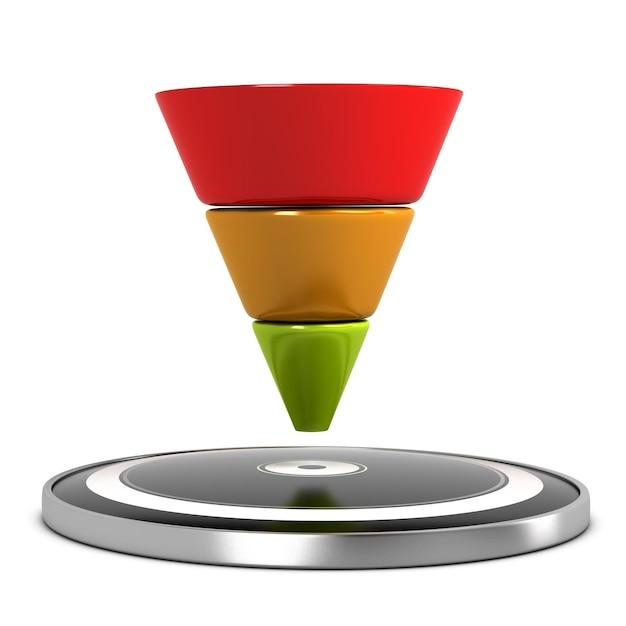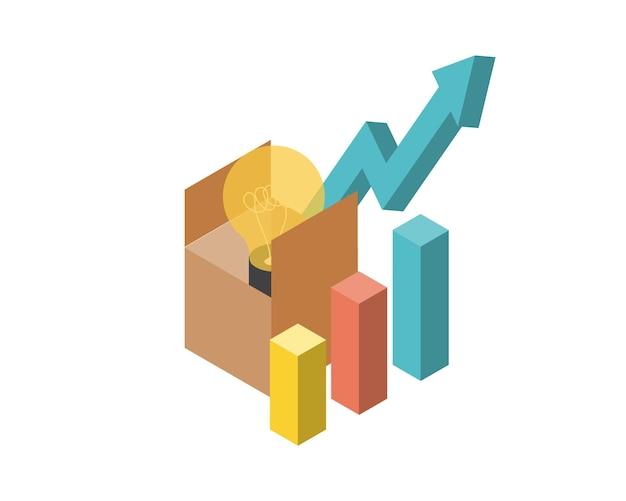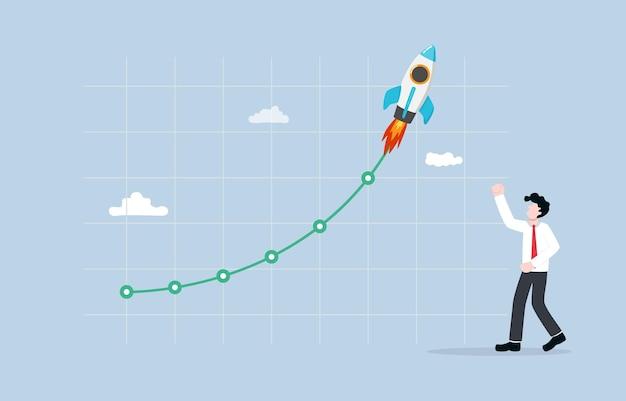Creating a successful business requires more than just a great product; it demands a strategic approach to attracting, converting, and retaining customers. That’s where the concept of a product-led growth (PLG) funnel comes into play. In this guide, we’ll delve into the world of PLG funnels, explore the power of growth flywheels and product flywheels, and understand the difference between PLG and traditional sales-led growth (SLG). Get ready to unlock the secrets of skyrocketing your business with a product-led growth strategy!
Product-Led Growth: The Funnel that Drives Success
What is Product-Led Growth
Product-Led Growth (PLG) is a strategy that puts the product at the center of a company’s growth strategy. Instead of relying on traditional marketing tactics, PLG focuses on delivering value through the product itself. It’s all about letting the product do the talking and convincing customers to stick around because of its inherent value.
The Power of the Funnel
To understand the impact of PLG, let’s take a closer look at the product-led growth funnel. This funnel has four key stages: acquisition, activation, retention, and expansion. Each stage plays a crucial role in driving sustainable growth for your business.
Acquisition: Getting Users In
The first stage of the product-led growth funnel is all about attracting users to your product. This can be done through various channels, such as organic search, referrals, or partnerships. The goal here is to create awareness and generate interest in your product.
Activation: Getting Users to Act
Once you’ve acquired users, the next step is to get them to take some sort of action within your product. This could be completing a sign-up, onboarding process, or experiencing a key feature. By providing a seamless and intuitive user experience, you increase the likelihood of users becoming activated and engaged.
Retention: Keeping Users Engaged
The retention stage is all about keeping your users engaged and ensuring they continue to find value in your product. This can be achieved through regular updates, personalized communication, and ongoing support. By consistently delivering value, you increase the chances of users sticking around for the long haul.
Expansion: Growing with Your Users
The final stage of the product-led growth funnel is focused on expanding the value you provide to your users. This could involve upselling or cross-selling additional features or products. By identifying the needs and pain points of your users, you can continue to grow alongside them and drive revenue for your business.
Why Product-Led Growth Works
Product-led growth is more than just a buzzword – it’s a proven strategy that drives success. By putting the product at the forefront, you create a self-sustaining system that drives organic growth. Users who find value in your product become advocates and refer others, creating a viral effect that expands your user base.
The product-led growth funnel is a powerful tool for driving sustainable growth. By focusing on acquiring users, getting them to take action, keeping them engaged, and growing alongside them, you can create a customer-centric growth strategy. With PLG, your product becomes the driving force behind your success, setting you apart from traditional marketing methods. So, embrace the power of product-led growth and watch your business thrive.
Growth Flywheel: Boosting Your Product-Led Growth
What is a Growth Flywheel
A growth flywheel is an essential component of a successful product-led growth strategy. It is a framework that leverages the power of your existing customers and delighted users to drive organic growth for your business. Think of it as a virtuous circle that continuously generates momentum and propels your company forward.
Delighting Your Customers
At the heart of the growth flywheel is the notion of customer delight. When your product meets or exceeds customer expectations, it creates a positive feedback loop. Satisfied customers become advocates, spreading the word about your product to their networks. Word-of-mouth referrals are incredibly powerful and can attract new users without requiring significant marketing efforts.
Creating a Seamless User Experience
To make your growth flywheel spin faster, you need to focus on providing a seamless user experience. Identify potential friction points in your product and work on improving them. Ensure that your onboarding process is smooth and intuitive, allowing users to quickly understand and start using your product’s core value.
Building Strong Relationships
Another crucial element of the growth flywheel is building strong relationships with your customers. Actively engage with them, gather feedback, and continuously iterate on your product based on their needs and preferences. This iterative approach reinforces the notion that you value their opinions, making them more likely to remain loyal and recommend your product to others.
Leveraging Data for Growth
Data plays a vital role in fueling the growth flywheel. Analyzing user behavior, usage patterns, and customer feedback helps you uncover valuable insights. By understanding how customers interact with your product, you can further improve its usability and identify opportunities for expansion or upselling. Data-driven decisions enable you to provide better experiences, leading to increased user satisfaction and accelerated growth.
By embracing the growth flywheel concept, you can revolutionize your product-led growth approach. Focus on delighting your customers, creating a seamless user experience, building strong relationships, and leveraging data for sustainable growth. Remember, a happy customer is not only beneficial for your business but also acts as a catalyst for attracting new users. Start implementing the growth flywheel strategy today, and witness your product-led growth soar to new heights.
Product Flywheel: Igniting the Growth Engine
In the world of product-led growth, the concept of a product flywheel plays a vital role in propelling businesses towards success. Just like a traditional flywheel, the product flywheel represents the cyclical process of attracting, engaging, and delighting customers to create a self-propelling growth engine.
Attracting the Right Audience
The journey of a product-led growth funnel begins by attracting the right audience. It’s not just about casting a wide net; it’s about targeting those who have a genuine need and interest in what your product has to offer. A compelling website, optimized landing pages, and effective content marketing are some of the key ingredients to draw in potential customers.
Engaging Users with a Stellar Experience
Once you’ve attracted users into your product flywheel, the next step is to provide them with an exceptional experience. This means creating a user interface that is intuitive, seamless, and enjoyable to navigate. Users should feel empowered to explore and discover the product’s value on their own terms, without the need for hand-holding.
Delighting Customers with Value
Delighting customers is the secret sauce to activating the product flywheel and turning users into loyal advocates. Delivering on the promises of your product and consistently exceeding customer expectations creates a joyful experience that makes users excited to share their positive experiences with others. Word-of-mouth recommendations will then start attracting even more users into the flywheel.
Empowering Users as Promoters
As customers become promoters, they become an integral part of the product flywheel. By empowering users to become advocates, you can harness the power of viral growth. Utilize referral programs, incentivize sharing, and make it easy for customers to spread the word about your product. This organic growth can significantly accelerate the flywheel’s rotation.
Amplifying the Flywheel Impact
To amplify the impact of the product flywheel, it’s important to consistently analyze and optimize the entire process. Collect and act upon feedback from customers, measure key metrics, and iterate on your product. By constantly finding ways to improve the flywheel, you can transform it into a powerful growth engine that drives sustainable success.
In conclusion, the product flywheel is the beating heart of the product-led growth funnel. By attracting the right audience, engaging users with a stellar experience, delighting customers with value, and empowering them as promoters, businesses can ignite their growth engine and achieve long-lasting success. So, fasten your seatbelt and get ready to unleash the power of the product flywheel!
What is a PLG Funnel
When it comes to achieving growth for your product, understanding the concept of a Product Led Growth (PLG) funnel is essential. So, what exactly is a PLG funnel, you ask? Well, let me break it down for you in the simplest terms.
The Basics of a PLG Funnel
At its core, a PLG funnel is a framework that outlines the stages a user goes through when interacting with your product. It’s like a journey that starts as soon as someone discovers your product and continues until they become a paying customer, an advocate, or even both!
Stage 1: Awareness
Here’s where it all begins – the awareness stage. This is when users first come across your product. Maybe they stumble upon it while browsing the web or a friend recommends it. They become aware of your product and begin to explore what it has to offer.
Stage 2: Activation
Once users are aware of your product, the next step is activation. This is the stage where they actually start using your product and experience its value firsthand. It’s like love at first click! You want to make sure that users have a smooth and delightful onboarding experience to keep them engaged and excited about what your product can do for them.
Stage 3: Engagement
Okay, your users are now activated, but the journey doesn’t end there. In the engagement stage, you want to keep them coming back for more. This is where you need to nurture and cultivate that user-product relationship. Provide them with additional value through updates, new features, or personalized recommendations. Keep them hooked and make sure they can’t get enough of your product!
Stage 4: Conversion
Ah, the conversion stage – the holy grail of the PLG funnel. This is when users go from being free users to paying customers. It’s like leveling up in a game or going from being just a fan to a groupie! To encourage conversions, you can offer premium features, exclusive benefits, or simply irresistible pricing plans. Show them why becoming a customer is the next logical step in their journey with your product.
Stage 5: Advocacy
Congratulations, you’ve made it to the final stage – advocacy. This is when users become your biggest fans and start spreading the word about your product. They become your brand ambassadors, singing your praises and recommending your product to their network. Their love for your product becomes infectious, attracting new users and fueling the growth of your product-led empire!
Wrapping It Up
And there you have it – a PLG funnel explained in all its glory! From awareness to advocacy, each stage plays a vital role in driving growth for your product. By understanding this framework and optimizing each stage, you can supercharge your product-led growth strategy and watch your user base skyrocket. So, put on your growth hacking hat and get ready to conquer the world, one user at a time!
Product-Led Growth Loops
Product-led growth loops play a crucial role in the success of businesses that adopt a product-led growth strategy. These loops are powerful mechanisms that leverage the use of the product itself to acquire, activate, and retain customers. Let’s dive into the nitty-gritty details of how these loops work and why they are essential.
The Acquisition Loop: Getting Customers in the Door
The first step in the product-led growth loop is acquiring customers. This involves attracting users to your product and getting them to sign up or create an account. Think of it as the “getting customers in the door” phase. This is where you showcase the value of your product and convince potential users to take the next step.
To maximize the effectiveness of the acquisition loop, it’s important to focus on user-friendly onboarding experiences and removing any barriers that may discourage sign-ups. By offering a seamless and delightful user experience, you increase the likelihood that users will convert into active customers.
The Activation Loop: Guiding Users to Their “Aha!” Moment
Once you’ve acquired customers, the next step is to activate them. Activation refers to guiding users to reach the “aha!” moment—the moment when they experience the true value of your product. This is the stage where users go beyond signing up and start actively using your product.
To drive activation, it’s crucial to help users understand the core features and benefits of your product. Showcasing the value your product provides and helping users achieve their desired outcomes is key. By implementing user education, interactive tutorials, and helpful tooltips, you can significantly increase the likelihood of activation.
The Retention Loop: Keeping Customers Engaged and Coming Back for More
Retention is the lifeblood of any successful business, and the product-led growth loop aims to keep customers engaged and coming back for more. Retaining customers not only increases revenue but also builds a loyal customer base.
To ensure strong retention, it’s important to focus on delivering ongoing value to customers. Regularly communicate product updates, offer personalized recommendations, and provide exceptional customer support. By continuously exceeding customer expectations, you can foster long-lasting relationships and increase customer loyalty.
The Referral Loop: Turning Customers Into Powerful Advocates
The final piece of the product-led growth loop puzzle is referrals, where satisfied customers become powerful advocates and bring in new customers. Referrals are a highly effective way to acquire new customers, as people tend to trust recommendations from their peers.
To encourage referrals, make it easy for customers to share their positive experiences with others. Implement referral programs, offer incentives, and provide exceptional customer service to incentivize customers to spread the word about your product.
Wrapping Up
Product-led growth loops are instrumental in driving the growth of businesses by leveraging the product itself to acquire, activate, retain, and refer customers. By optimizing each phase of the loop and delivering ongoing value, businesses can successfully scale and achieve sustainable growth. So, if you’re looking to turbocharge your growth strategy, give product-led growth loops a try!
What is the Difference Between PLG and SLG
Understanding the Two Growth Funnel Approaches
In the world of product-led growth (PLG) and sales-led growth (SLG), it’s essential to grasp the differences between these two approaches. Let’s dive into the nuances of each and explore how they can impact the success of your business.
Product-led Growth (PLG): Empowering Users to Drive Growth
The Power of the Product
PLG puts the product front and center, emphasizing its value and usability. The aim here is to create a seamless user experience that activates and onboards customers organically.
Virality and Network Effects
One of the key hallmarks of PLG is its focus on virality and network effects. By designing products that are inherently shareable and encourage users to invite others, PLG harnesses the power of word-of-mouth marketing to drive growth.
Self-Service and Trial Offers
Another aspect of PLG is the emphasis on self-service and trial offers. By providing users with free or low-cost access to the product, companies can remove barriers to entry and enable users to experience the value firsthand.
Sales-led Growth (SLG): The Human Touch
The Role of Sales
In contrast to PLG, SLG places a stronger emphasis on human interaction and the sales team. In an SLG-focused approach, sales reps actively engage with potential customers, build relationships, and guide them through the sales process.
Personalized Demos and Consultative Selling
SLG often involves personalized demos and consultative selling. Sales reps work closely with prospects to understand their needs, offer customized solutions, and showcase the value the product can bring to their specific situation.
Upselling and Cross-Selling
Another key aspect of SLG is the opportunity for upselling and cross-selling. With a direct sales approach, companies can more effectively identify additional opportunities to provide value and expand the customer relationship.
Choosing the Right Approach for Your Business
When deciding between PLG and SLG, it’s crucial to consider your product, target audience, and resources. PLG may be the right choice if you have a self-service product that can be easily adopted and shared. On the other hand, SLG might be more suitable if you have a complex or high-value product that requires a more personal touch.
While each approach has its strengths and weaknesses, the key is to find the right balance that aligns with your business goals. By understanding the differences between PLG and SLG, you can make an informed decision and implement a growth strategy that maximizes your chances of success. So, whether you choose to empower your users or tap into the power of human interaction, embrace the growth funnel that suits your unique needs and aspirations.


